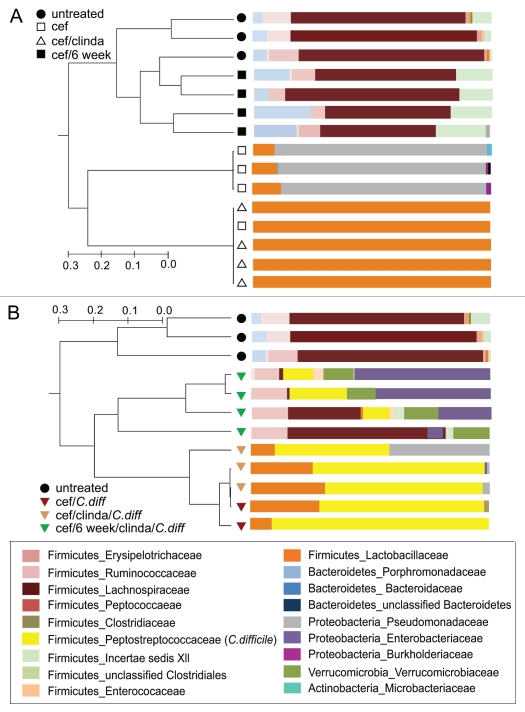Figure 6.
Shifts in microbial community structure and composition associated with cefoperazone administration and C. difficile infection. The composition of the gut microbiota was determined by 16s rRNA clone library construction. (A) The microbial communities in animals that were treated with cefoperazone with or without clindamycin were altered from that seen in untreated controls. Six weeks after cefoperazone treatment, the communities returned to a community structure that resembled untreated controls. (B) Animals that were challenged with C. difficile within three days after stopping cefoperazone treatment (with or without clindamycin treatment) had very high relative levels of C. difficile in their microbial communities. Animals that were challenged with C. difficile 6 weeks after antibiotic treatment was stopped followed by a single dose of clindamycin had less C. difficile present. The relative abundance of C. difficile appeared to directly correlate with the amount of Proteobacteria and inversely with the abundance of Lachnospiraceae. Dendrograms were constructed using Morisita-Horn similarities based on >97% sequence similarity while taxonomic assignments were made using the Ribosomal Database Project Classifier. cef-cefoperazone, clinda-clindamycin, C.diff-C. difficile.

